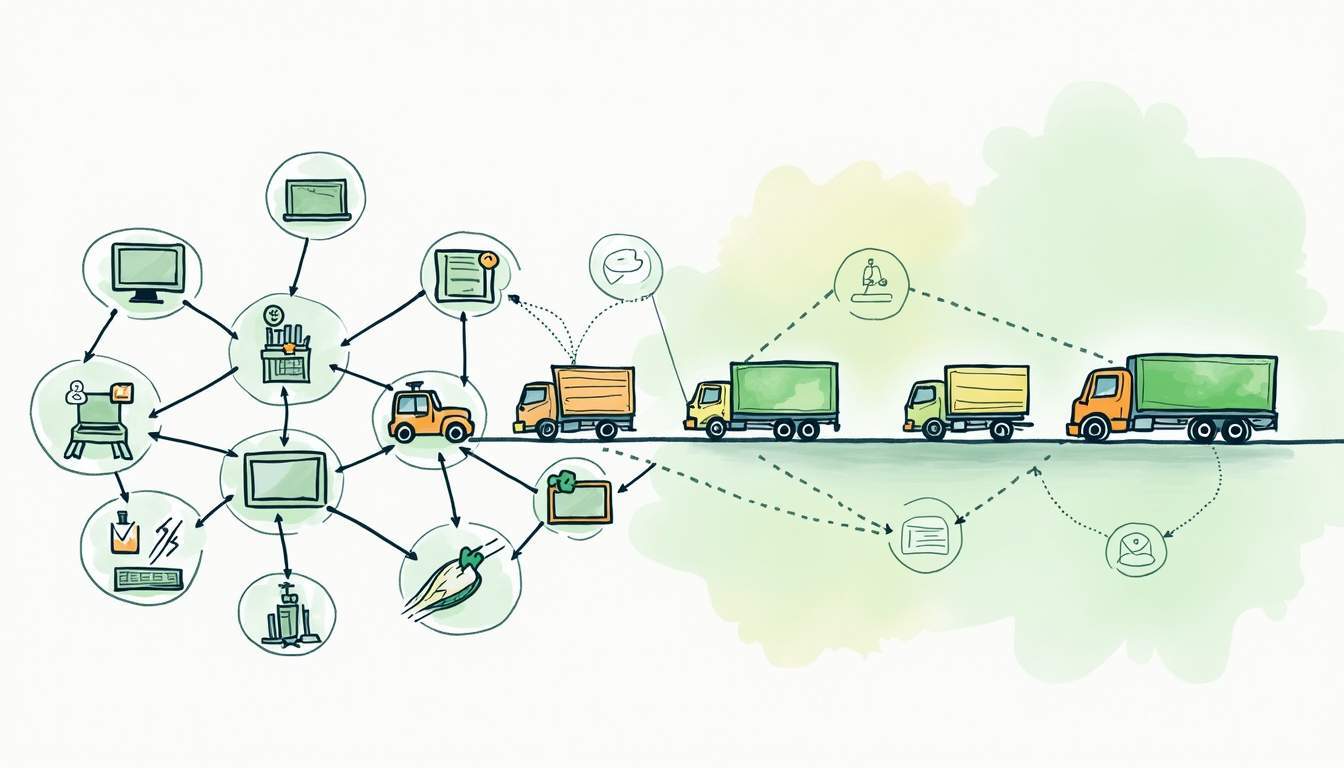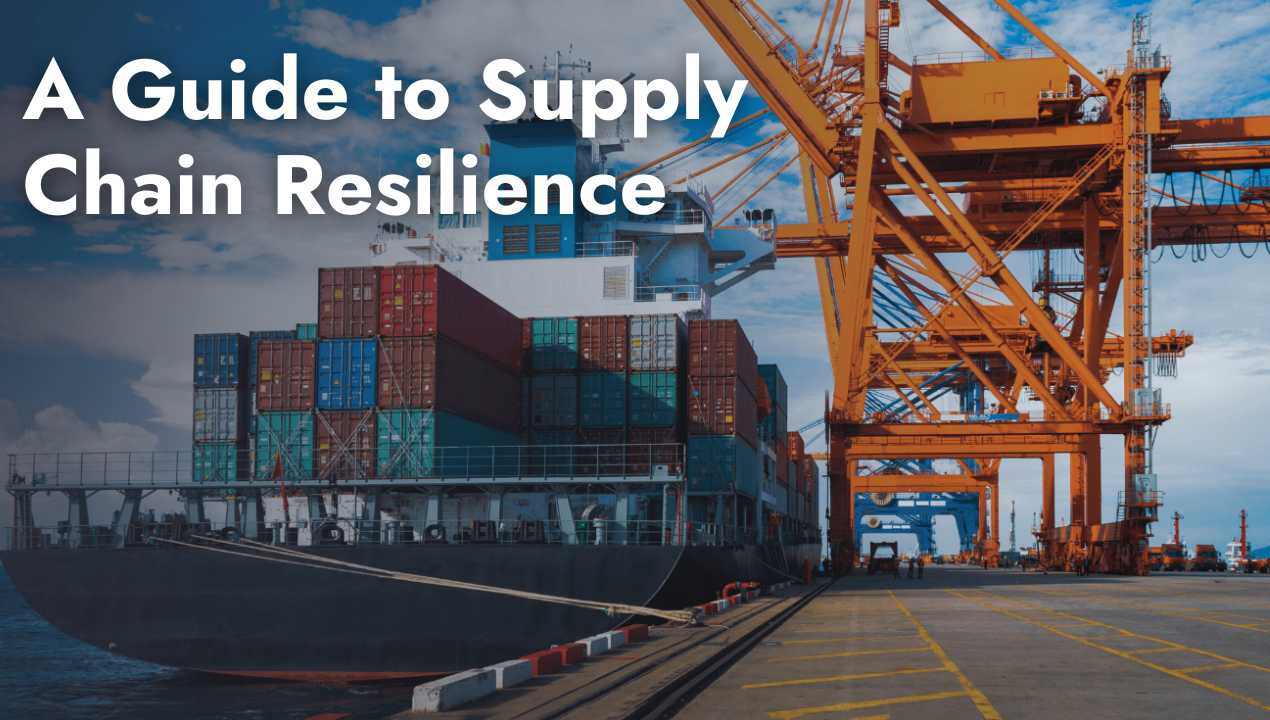Share this
What’s the Difference Between a Supply Chain and a Value Chain?
by Shipfusion Team on Jun. 3, 2025

Every ecommerce business owner knows that achieving operational efficiency is key to sustaining growth and maximizing profits. But to do this effectively, understanding the dynamics behind the systems that drive your business is critical. One relationship – the difference between a supply chain and a value chain – is often muddled, but they serve different purposes and involve distinct processes.
Knowing the difference between a supply chain and a value chain, and how each one influences your strategy, can have a direct impact on your business success. In this guide, we will explore these concepts in detail, breaking down their components and explaining how they both play a role in shaping the customer experience, driving efficiency, and ultimately boosting your bottom line.
What Is a Supply Chain?
The supply chain is the backbone of any business that deals with physical products. It encompasses the entire process of producing, handling, and delivering a product from raw materials all the way to the customer’s hands. The supply chain involves multiple stakeholders, each playing a vital role in ensuring the flow of goods is as smooth and efficient as possible.
Key components of a supply chain:
-
Suppliers: These are the companies that provide raw materials or components needed to make your product. Without reliable suppliers, a product's journey through the supply chain will be compromised.
-
Manufacturers: Manufacturers are responsible for transforming raw materials into finished products. This is where the core value of the product starts to take shape.
-
Warehouses: Warehouses store the product until it is needed by retailers or directly shipped to consumers. Efficient warehousing ensures that inventory is available when required, reducing delays.
-
Distributors: These companies take the finished products from manufacturers and move them to retailers or directly to customers. They play a critical role in logistics.
-
Retailers: These businesses sell the product directly to consumers, either through physical stores or ecommerce platforms.
Supply Chain Management (SCM)
Efficient supply chain management is vital to minimizing costs, optimizing time, and ensuring products are available when needed. SCM involves coordinating and integrating various processes, from procurement to delivery, to ensure operational excellence.
Some key strategies that can enhance your supply chain include:
-
Demand Forecasting: By predicting customer demand, you can prevent stockouts and overstocking, ensuring inventory is aligned with customer needs.
-
Inventory Management: Effective inventory management helps to keep optimal stock levels, reducing the costs associated with storing excess products while avoiding product shortages.
-
Logistics Optimization: Streamlining transportation and distribution processes to ensure timely deliveries can help reduce operational costs and improve customer satisfaction.
What is a Value Chain?
While the supply chain focuses on getting products to customers, the value chain focuses on the activities that add value to the product or service throughout its lifecycle. The value chain concept highlights the importance of every step involved in making the product more valuable to customers, from the initial design through to after-sales service.
Key components of a value chain:
-
Inbound Logistics: This refers to the activities involved in receiving, storing, and distributing inputs needed to create the product, such as raw materials or components.
-
Operations: These are the processes where raw materials or components are transformed into finished products. This includes manufacturing, assembly, and packaging.
-
Outbound Logistics: The activities that move the final product to the customer, including warehousing, order fulfillment, and shipping.
-
Marketing and Sales: These are the strategies used to promote and sell the product, ensuring it reaches the right customer base and is perceived as valuable.
-
Service: After the sale, the company may offer services to maintain or enhance the product's value, such as customer support, warranty services, or product upgrades.
Value Chain Analysis
Understanding and optimizing your value chain through a value chain analysis can help you identify areas where you can improve product quality, reduce costs, and increase customer satisfaction.
A good value chain analysis focuses on:
-
Identifying both primary activities (such as operations and marketing) and support activities (like human resources and technology) that contribute to value creation.
-
Assessing the costs and value added by each activity, helping to identify areas where efficiencies can be gained.
-
Looking for opportunities to differentiate your products and create a competitive advantage.
Key Differences Between a Supply Chain and a Value Chain
Although the supply chain and value chain work together to ensure the success of a business, they differ significantly in their objectives, focus, and processes.
1. Focus
-
Supply Chain: Primarily concerned with the movement of goods and services across different stages, aiming for efficiency and cost reduction.
-
Value Chain: Focuses on the activities that add value to the product, ultimately aiming to enhance customer satisfaction and drive loyalty.
2. Objective
-
Supply Chain: The goal of the supply chain is to deliver products to customers in a timely and cost-effective manner. It emphasizes logistics and efficiency.
-
Value Chain: The value chain aims to increase the perceived value of a product or service. The goal is to justify the price of the product and increase customer loyalty by enhancing the product's features, quality, or customer experience.
3. Components
-
Supply Chain: Composed of logistics and operational components, the supply chain is centered around the movement of goods from one stage to another.
-
Value Chain: The value chain includes both primary and support activities designed to improve product quality, market positioning, and customer satisfaction.
4. Process
-
Supply Chain: Involves the physical handling of products and raw materials, including warehousing, transportation, and inventory management.
-
Value Chain: Focuses on transforming raw inputs into valuable outputs through operations, marketing, sales, and customer service.
Why Understanding Both Is Important for Ecommerce Businesses
For ecommerce businesses, both the supply chain and value chain are essential in crafting a strategy that is efficient, cost-effective, and customer-focused. Understanding the difference between a supply chain and a value chain can provide a competitive edge.
Here’s how:
1. Operational Efficiency
By streamlining your supply chain, you can reduce costs associated with storage, shipping, and warehousing while ensuring timely deliveries. The result is an increase in profit margins and greater customer satisfaction.
2. Competitive Advantage
A comprehensive value chain analysis allows businesses to identify unique selling points and differentiate themselves from competitors. Whether through superior product features, exceptional customer service, or innovative marketing strategies, enhancing your value chain can help you stand out in a crowded ecommerce marketplace.
3. Strategic Decision-Making
When you understand how the supply chain and value chain interact, you can make more informed strategic decisions. Aligning your supply chain's operational efficiency with the value-added elements of your value chain ensures that you can meet customer expectations while maintaining cost-effectiveness.
We Know the Difference Between a Supply Chain and a Value Chain
In conclusion, the difference between a supply chain and a value chain lies in their respective focuses. While the supply chain emphasizes efficiency and cost reduction, the value chain focuses on enhancing the overall value of the product to the customer. For ecommerce business owners, understanding both is crucial for optimizing operations, building a competitive edge, and making smarter decisions.
As you look to improve your supply chain and value chain, partnering with Shipfusion can help streamline your fulfillment process and enhance your value proposition to customers. Our efficient 3PL services are designed to optimize both your logistics and value creation strategies, so you can focus on growing your business.
Ready to take the next step? Contact Shipfusion today to get started and elevate your ecommerce operations to the next level.
Share this
You May Also Like
These Related Articles

How to Utilize Supply Chain Analytics

A Guide to Supply Chain Resilience In Ecommerce

Top 10 Best 3PL Providers for Cold Chain Products
- October 2025 (1)
- September 2025 (6)
- August 2025 (8)
- July 2025 (16)
- June 2025 (22)
- May 2025 (27)
- April 2025 (27)
- March 2025 (26)
- February 2025 (26)
- January 2025 (34)
- December 2024 (16)
- November 2024 (22)
- October 2024 (22)
- September 2024 (27)
- August 2024 (9)
- July 2024 (8)
- June 2024 (5)
- May 2024 (8)
- April 2024 (7)
- March 2024 (6)
- February 2024 (6)
- January 2024 (5)
- December 2023 (3)
- November 2023 (3)
- October 2023 (5)
- September 2023 (4)
- August 2023 (2)
- July 2023 (1)
- June 2023 (4)
- March 2023 (2)
- October 2022 (1)
- September 2022 (5)
- August 2022 (4)
- July 2022 (7)
- June 2022 (4)
- May 2022 (4)
- April 2022 (6)
- March 2022 (2)
- February 2022 (1)
- January 2022 (3)
- December 2021 (2)
- November 2021 (4)
- October 2021 (2)
- September 2021 (5)
- August 2021 (4)
- July 2021 (4)
- June 2021 (3)
- May 2021 (2)
- April 2021 (3)
- March 2021 (3)
- February 2021 (3)
- January 2021 (2)
- December 2020 (4)
- November 2020 (2)
- October 2020 (4)
- September 2020 (2)
- July 2020 (5)
- June 2020 (4)
- May 2020 (2)
- April 2020 (2)
- March 2020 (4)
- February 2020 (1)
- December 2019 (1)
- May 2018 (1)
- March 2018 (2)
- February 2018 (3)
- January 2018 (3)
- November 2017 (3)
- July 2017 (4)
- March 2017 (3)
- February 2017 (5)
- January 2017 (3)
- December 2016 (4)
- November 2016 (6)
- October 2016 (6)
- October 2015 (1)
- September 2015 (1)
- June 2015 (3)
- May 2015 (3)
- August 2014 (1)
- July 2014 (1)
- March 2014 (1)
- February 2014 (1)